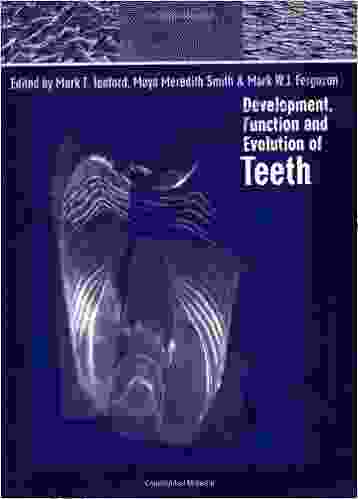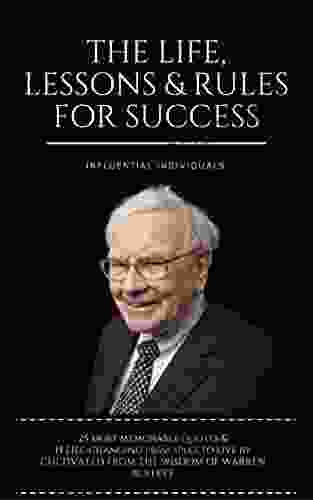Development, Function, and Evolution of Teeth: Unraveling the Secrets of Your Smile

Teeth, the gleaming white gems adorning our smiles, play a crucial role in our overall health and well-being. Beyond their aesthetic appeal, they serve as essential tools for chewing, speech, and social interactions. However, the complexity of teeth extends far beyond their visible surfaces, encompassing intriguing developmental processes, diverse functions, and a remarkable evolutionary journey. In this comprehensive article, we will delve into the fascinating world of teeth, exploring their development, function, and evolution, shedding light on the incredible adaptations that have shaped our dentition.
5 out of 5
| Language | : | English |
| File size | : | 10309 KB |
| Text-to-Speech | : | Enabled |
| Print length | : | 328 pages |
| Lending | : | Enabled |
The Intricate Development of Teeth
The development of teeth, a complex and tightly regulated process, begins in the womb. During the sixth week of gestation, the dental lamina, a thin band of tissue, forms within the developing jaws. This lamina gives rise to the enamel organs, which are responsible for producing the tooth's hard enamel coating. Simultaneously, dental papillae, located beneath the enamel organs, develop into the tooth's dentin and pulp.
As development progresses, the enamel organs secrete enamel, a crystalline mineral that forms the protective outer layer of the tooth. The dentin, a mineralized tissue that makes up the bulk of the tooth, is produced by odontoblasts, specialized cells located within the dental pulp. The pulp, a soft tissue filled with blood vessels and nerves, provides nourishment and sensation to the tooth.
The development of teeth is a continuous process that extends into childhood and adolescence. As children grow, their baby teeth, also known as deciduous teeth, begin to erupt through the gums. These teeth, while temporary, play a vital role in chewing, speech, and jaw development. Around the age of six, the deciduous teeth gradually start to fall out, making way for the emergence of permanent teeth, which will remain with us for the rest of our lives.
Diverse Functions of Teeth
Teeth are not merely passive structures; they perform a wide range of essential functions that contribute to our overall well-being. The primary function of teeth is mastication, the mechanical breakdown of food into smaller pieces. This process is facilitated by the different shapes and sizes of teeth, which work together to tear, crush, and grind food into a digestible form.
In addition to chewing, teeth play a crucial role in speech. The position and shape of our teeth help to articulate sounds, allowing us to communicate effectively. The incisors, for instance, are used to produce consonants like "f" and "v," while the molars are responsible for creating the sounds "m" and "b."
Teeth also contribute to our appearance and self-confidence. A healthy, attractive smile can boost our self-esteem and enhance our social interactions. Furthermore, the presence of teeth helps to support the lips and cheeks, giving our face its characteristic shape.
Evolutionary Journey of Teeth
The evolution of teeth is a remarkable tale of adaptation and diversification. The earliest teeth, simple conical structures, emerged in primitive fish millions of years ago. Over time, teeth evolved to meet the specific needs of different species, reflecting their dietary habits and ecological niches.
In mammals, teeth have undergone significant specialization, with different types of teeth adapted for specific functions. Incisors, located at the front of the mouth, are used for cutting and biting, while canines, the pointed teeth behind the incisors, are ideal for tearing. Premolars and molars, the broad, flat teeth at the back of the mouth, serve to grind and crush food.
The evolutionary history of human teeth is particularly fascinating. Early hominids, such as Australopithecus afarensis, possessed small, relatively uniform teeth, suggesting a diet consisting primarily of fruits and vegetables. As hominids evolved into Homo sapiens, their teeth became larger and more specialized, reflecting a shift towards a more omnivorous diet.
The wisdom teeth, also known as third molars, are a vestige of our evolutionary past. These teeth, often impacted or misaligned, were once essential for chewing tough, fibrous plant material. However, with the advent of cooking and the of softer foods into our diet, the wisdom teeth have become largely redundant.
Teeth are not just hard, white structures in our mouths; they are intricate biological marvels that play a vital role in our health and well-being. From their fascinating development to their diverse functions and remarkable evolutionary journey, teeth offer a glimpse into the incredible complexity of human biology. Understanding the development, function, and evolution of teeth not only enhances our appreciation of these remarkable structures but also provides valuable insights into our own evolutionary history and the interconnectedness of life.
Whether you are a dental professional, a student, or simply someone curious about the human body, we invite you to delve deeper into the captivating world of teeth. Explore the intricate mechanisms of tooth development, marvel at the diverse functions they perform, and trace the remarkable evolutionary journey that has shaped our dentition. The secrets of teeth await your discovery.
5 out of 5
| Language | : | English |
| File size | : | 10309 KB |
| Text-to-Speech | : | Enabled |
| Print length | : | 328 pages |
| Lending | : | Enabled |
Do you want to contribute by writing guest posts on this blog?
Please contact us and send us a resume of previous articles that you have written.
 Book
Book Novel
Novel Page
Page Chapter
Chapter Text
Text Story
Story Genre
Genre Reader
Reader Library
Library Paperback
Paperback E-book
E-book Magazine
Magazine Newspaper
Newspaper Paragraph
Paragraph Sentence
Sentence Bookmark
Bookmark Shelf
Shelf Glossary
Glossary Bibliography
Bibliography Foreword
Foreword Preface
Preface Synopsis
Synopsis Annotation
Annotation Footnote
Footnote Manuscript
Manuscript Scroll
Scroll Codex
Codex Tome
Tome Bestseller
Bestseller Classics
Classics Library card
Library card Narrative
Narrative Biography
Biography Autobiography
Autobiography Memoir
Memoir Reference
Reference Encyclopedia
Encyclopedia Iyanla Vanzant
Iyanla Vanzant Jacob H Masliyah
Jacob H Masliyah Ian St James Roberts
Ian St James Roberts Vincenzo Di Nicola
Vincenzo Di Nicola Patrick Kelley
Patrick Kelley Ian Tuhovsky
Ian Tuhovsky J C Christian
J C Christian Norihiro Iwase
Norihiro Iwase Howard R Davia
Howard R Davia Janice Elliott Howard
Janice Elliott Howard Jack Turner
Jack Turner Ian Gardner
Ian Gardner J Ronald Adair
J Ronald Adair J Lewis Blackburn
J Lewis Blackburn Ian Kalman
Ian Kalman Jada Davis
Jada Davis Howard C Johnson
Howard C Johnson Jackie Jouret
Jackie Jouret Simone Moro
Simone Moro J C Burkesmith
J C Burkesmith
Light bulbAdvertise smarter! Our strategic ad space ensures maximum exposure. Reserve your spot today!

 Enrique BlairSynthesis And Characterization Of Glycosides: A Journey into the Realm of...
Enrique BlairSynthesis And Characterization Of Glycosides: A Journey into the Realm of... Herbert CoxFollow ·15.9k
Herbert CoxFollow ·15.9k Fernando PessoaFollow ·16.2k
Fernando PessoaFollow ·16.2k Todd TurnerFollow ·14.6k
Todd TurnerFollow ·14.6k Vic ParkerFollow ·7.9k
Vic ParkerFollow ·7.9k Ethan MitchellFollow ·13.7k
Ethan MitchellFollow ·13.7k Avery SimmonsFollow ·5.3k
Avery SimmonsFollow ·5.3k Derek BellFollow ·10.1k
Derek BellFollow ·10.1k Chance FosterFollow ·14.8k
Chance FosterFollow ·14.8k

 Mike Hayes
Mike HayesUnlock Your Nonprofit Potential: A Comprehensive Guide to...
: Embarking on the Path to Impactful...

 Cody Russell
Cody RussellUnlock the Secrets of Captivating Radio Programming:...
In the fiercely competitive world of...

 Aron Cox
Aron CoxUnveiling the Enchanting World of Beth Inspired Eye...
A Realm of Imagination and Wonder Embark on...

 Felix Carter
Felix CarterUnlock the Secrets of Legal Publishing with West Hartford...
West Hartford Legal Publishing, the renowned...

 Henry Hayes
Henry HayesUnveiling the Secrets of the Panama Papers: Exposing...
The Panama Papers is a groundbreaking...
5 out of 5
| Language | : | English |
| File size | : | 10309 KB |
| Text-to-Speech | : | Enabled |
| Print length | : | 328 pages |
| Lending | : | Enabled |












